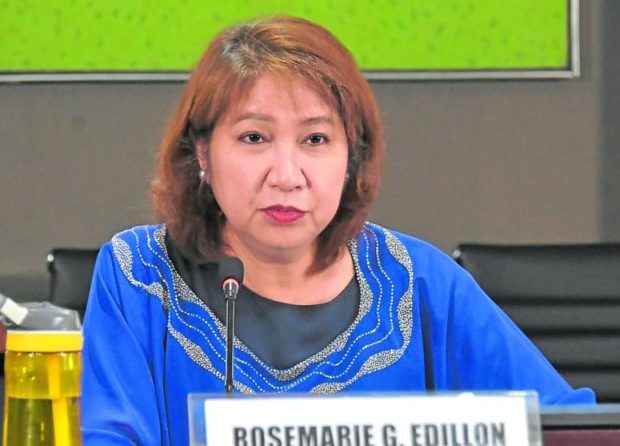MANILA, Philippines — An estimated 1.5 million Filipinos are expected to join the labor force next year, or more than double the normal volume of new entrants of 600,000 in previous years.
Undersecretary Rosemarie Edillon of the National Economic and Development Authority (Neda) told the Inquirer on Tuesday that this was expected to worsen unemployment as it would exceed the number of jobs forecast to be made available by the reopening of the economy.
Edillon said Neda was already bracing for a possibly higher jobless rate in 2023 as more graduates under the K-12 basic education curriculum were also set to join the pool of Filipinos looking for work.
She pointed out that before the pandemic, the labor force increased by an average of 600,000 yearly from 2016 to 2019.
“This, notwithstanding, we note that between 2018 and 2019, there was an increase in the labor force by 1.3 million, yet the unemployment rate was a low of 5.1 percent because of the sustained growth which encouraged more investments” before COVID-19 struck, Edillon said.
Edillon said the expected increase in the labor force next year would be mainly due to the economic recovery and the “stabilization of the K-12 stream,” which would lead more Filipinos—including the youth and senior citizens—to look for jobs as more sectors reopen from previously stringent COVID-19 lockdowns that caused the loss of millions of livelihood and shuttered thousands of businesses.
However, while the reopening of more productive sectors coupled with a projected economic rebound would generate more job opportunities next year, Neda officials earlier said their quantity and quality might lag behind the big number of Filipinos joining the labor force.
Gov’t intervention
The Philippine Statistics Authority earlier said that 2.99 million Filipinos were unemployed as of June this year.
Given the difficult economic times, National Statistician Dennis Mapa also noted that even retired Filipinos were forced to look for work as the labor force participation rate for those age 65 and above, or the number of senior citizens working or actively looking for a job, increased to 38.2 percent in June from 34.9 percent in May.
Documents on the proposed P5.268-trillion 2023 national budget had estimated the unemployment rate inching up to 5.7-6.8 percent next year from 5.1-6.5 percent this year, remaining above prepandemic levels.
The economic managers of President Ferdinand Marcos Jr. have said that their eight-point socioeconomic agenda would slash the jobless rate to 4-5 percent by 2028.
They said it could be done by increasing the share of wage and salaried workers in the private sector to 53-55 percent of the total by the time Marcos ends his term, from 48 percent in 2021.
Edillon said the state planning agency had sought a number of interventions so that young Filipinos graduating from the K-12 program next year would have something to do at work or in school, if ever they decide to pursue a college degree.
“For next year, we have suggested an increase in scholarships for masters of arts or science degrees, and other reskilling and microcredential programs. We will also push for more internship programs,” Edillon said.
OFW reforms
Also on Tuesday, Mr. Marcos pushed for reforms to improve the working conditions of overseas Filipino workers (OFWs), including having more bilateral labor agreements between the Philippines and other countries.
In a Facebook post, the Office of the President (OP) said Mr. Marcos and his officials discussed during the fifth Cabinet meeting the priority programs of the newly created Department of Migrant Workers (DMW) and the Department of Labor and Employment (Dole).
Among the priority projects of the DMW, led by Secretary Susan Ople, are the One Repatriation Command Center, OFW Mobile Application, and the National Reintegration Program.
“They presented their plans regarding repatriation, digitalization, negotiations, bilateral labor agreements, programs for OFW kids, reintegration of OFWs, scholarships, protection, and health,” Press Secretary Trixie Cruz-Angeles said at a press briefing.
In his first State of the Nation Address (Sona) on July 25, the President ordered the DMW and the Department of Information and Communications Technology to prioritize the automation of contracts of overseas Filipino workers.
“We shall automate the verification of contracts and issue secure Overseas Employment Certifications (OEC) that you can keep on your smartphone. I call on the (DMW) and the DICT to make this a top priority,” Mr. Marcos said in his Sona.
In his speech, he also called on the Department of Foreign Affairs to help the DMW in ensuring that OFWs who lost their jobs would find new opportunities.
For Dole’s part, the OP said “the core priority will be increasing employment opportunities, ensuring just and humane working conditions, and delivering accessible, prompt and continuous services to the people.”
RELATED STORIES
Hard times force even seniors to look for jobs
Neda chief: Hire more seniors; PH job market must evolve
Unemployment easing? SWS survey says 1 in 3 Filipinos jobless


